- Land and Resource Tenure Rights
- Land Use Management
- Managing Global Change Impacts
- Global Health Linkages to Conservation: Population Health and Environment; Water Sanitation and Hygiene
- Emerging Issues
As the current war against poaching in Africa wages on, conservationists are fighting a losing battle. Despite increased resources being directed towards protected areas, corruption and mis-management continue to thwart real achievement. Unfortunately, this situation is not new, however we have reached a critical point where we no longer have time to continue making the same mistakes. What must change to shift the paradigm? Luis discusses his experience in Dzanga Sangha Protected Areas, Central African Republic, and Garamba National Park in DRC, and proposes a new strategy for combating these ongoing problems.
Luis Arranz was born in Tenerife, Spain in 1956. He studied biology in the Universidad Autónoma de Madrid and in 1980 he began work in Equatorial Guinea, first doing tree census and then for the Project Men and Nature funded by the Spanish cooperation to create a network of protected areas in the country.
Between 1986 and 1990 worked in South America, redacting the management plan for Huanchaca National Park (now Noel Kempf Mercado NP) in Bolivia and looking for places to create protected areas in Bolivia Brazil and Venezuela.
In 1991, Luis returned to Africa working in Quissama NP, Angola for one year and then 9 years as Director of Monte Alén NP in Equatorial Guinea, 7 years as Director in Zakouma NP in Chad, 7 years as Director in Garamba NP in DRC, and 3 months as Interim Director in Odzala Kokoua NP in Congo Republic.
Since January 2017, he works for WWF in Dzanga Sangha Protected Areas in the Central African Republic.
On June 5 the w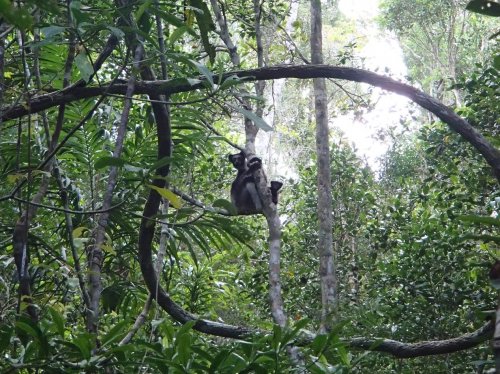 orld celebrates World Environment Day. The theme for the 2017 World Environment Day is, Connecting People to Nature. On this day we are encouraged to take time away from our daily lives to appreciate and engage with our natural world.
orld celebrates World Environment Day. The theme for the 2017 World Environment Day is, Connecting People to Nature. On this day we are encouraged to take time away from our daily lives to appreciate and engage with our natural world.
‘World Environment Day is the ‘People’s Day’ for doing something positive for the environment. Its aim is to harness individual actions and transform them into a collective power that has a legacy of real and lasting impact on the planet. The beauty of the day is in this diversity. It’s when citizens across the world collectively act, care and show their love for the planet. World Environment day
Natural reserves continue to provide critical functions to humanity. They provide a wonderful environment for us to interact, connect and experience the healing and other benefits that nature has to offer.
The Africa Biodiversity Collaborative Group (ABCG) Land and Resource Tenure Rights working group is piloting new approaches for securing tenure in critical ecosystems. These ecosystems are anchors for biodiversity that support livelihoods for growing local populations. Strengthening rights and securing tenure, especially over the community lands managed as common property, are central to the conservation of this biodiversity.
The Kabobo Natural Reserve is one of these critical ecosystem that the working group has been working on securing. On December 21, 2016, the reserve was gazetted as the first protected area of Tanganyika Province in Democratic Republic of Congo’s (DRC) representing a great milestone for ABCG, the Tanganyika Provincial Government and other stakeholders who worked hard to enable this realization. This is also a major step towards more fair participation in conservation in Africa’s largest forested country.
ABCG is applying the lessons learnt in the gazettement process in other areas of DRC and in the other ecosystems that we are working in in order to secure tenure and enable the communities living around these areas continue to protect and reap the benefits that come from living in harmony with nature.
Photo: Indri indri, target species for ABCG’s land use activities, Photo Credit: Harison Randrianasolo, CI/Madagascar
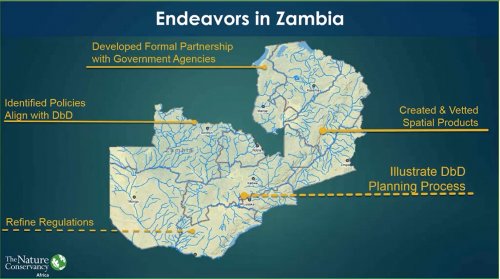 Africa not only embodies a rich array of natural resources, biodiversity, ecosystem services, and diverse culture but also has some of the world’s fastest growing economies and populations. Many African leaders are grappling with how to chart a development path that blends conservation integrity and durability of ecosystems and the continent’s rich natural heritage with the means to provide food, water, shelter, and power for future generations.
Africa not only embodies a rich array of natural resources, biodiversity, ecosystem services, and diverse culture but also has some of the world’s fastest growing economies and populations. Many African leaders are grappling with how to chart a development path that blends conservation integrity and durability of ecosystems and the continent’s rich natural heritage with the means to provide food, water, shelter, and power for future generations.
Anne Trainor, The Nature Conservancy’s (TNC) Smart Growth Director for the Africa Program described a science-based spatial planning approach known as “Development by Design” (DbD) at an Africa Biodiversity Collaborative Group speaker series held on May 22, 2017 at the World Wide Fund, Washington, DC. Anne demonstrated how the DbD approach, through smart planning, is empowering governments to achieve economic growth while prioritizing sustainable use of natural resources in Zambia and Kenya.
Event Resources
Click below to watch the webinar
Featured Speaker
Dr. Anne Trainor is The Nature Conservancy’s (TNC) Smart Growth Director for the Africa Program. Currently, Anne is working in Zambia and Kenya to develop a landscape planning framework that will enhance biodiversity and ecosystem integrity while promoting a national economic development agenda. She has over 15 years of experience using state-of-the-art ecological modeling tools and analytical methods to extract ecologically relevant insights from large and complex geospatial data sets. Prior to joining TNC’s Africa Region, Anne was a NatureNet Science Fellow in School of Forestry and Environmental Studies at Yale University. She holds a Ph.D. in Geography from University of North Carolina-Chapel Hill, a M.S. in Wildlife Management and Conservation from Colorado State University and a B.S. in Ecology from University of New Hampshire.
Biodiversity in African savannas is increasingly threated from extensive habitat loss, grazing, resource extraction and agriculture. A team of researchers and educators from The University of Florida, The University of Swaziland and The Organization for Tropical Studies discussed how they are addressing these issues at an Africa Biodiversity Collaborative Group speaker series held on May 9, 2017 at the African Wildlife Foundation, Washington, DC.
The team has two primary goals: 1) conducting research to help prevent biodiversity loss, and 2) use the research as a platform for developing human capacity.
The team is currently working on two long-term research projects examining the influence of abundant megaherbivores and agricultural landscapes on faunal biodiversity. One major hypothesis for balancing agricultural production with biodiversity and ecosystem functioning is the habitat heterogeneity hypothesis. This hypothesis states that by promoting heterogeneity (i.e. variation and variability of habitats) of land uses in agro-landscapes, there will be net benefits to biodiversity and ecosystem functioning. Through this research, they have found that although bird and ants responded positively to increased landscape heterogeneity other taxonomic groups did not, suggesting that the landscape heterogeneity cannot be broadly applied as a conservation strategy. Examining the influence of megaherbivores on biodiversity showed a clear linked megaherbivore induced changes in vegetation to changes biodiversity. At high densities megaherbivores (prominently elephants) led to broad scale declines in the richness, diversity and ecological functionality of multiple faunal communities. Alternatively, in absence of megaherbivores increased canopy cover also created conditions that led to broad scale decline of faunal taxonomic groups.
Through their research the team has trained 12 Swazi student leading to 7 master’s degrees, enrollment in 3 international PhD programs and 2 full time jobs in conservation. Additionally, they have trained 18 South African environmental monitors, who now use their newly acquired skills to understand environmental changes in economical and politically disadvantaged communities.
Click here to listen to the event’s webinar recording
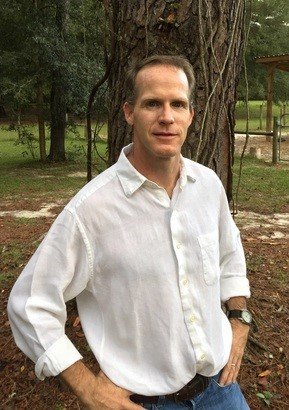 Dr. Bob McCleery is an Associate Professor in the Department of Wildlife Ecology and Conservation at the University of Florida. After completing his undergraduate from Cornell University he spent 2 years in Swaziland with the United States Peace Crops. He received his M.S. and Ph.D. in Wildlife and Fisheries Sciences from Texas A&M University. As a professor Dr. McCleery’s research has focused on understanding how wildlife respond to anthropogenic driven changes and maintaining wildlife communities and populations that foster healthy ecosystems. As part of his research he has published over 75 peer-reviewed manuscripts and book chapters and supervised 13 Ph.D. and 17 M.S students. He is the founder and co-director of the Savanna Research Center in Swaziland and was recently recognized as the University of Florida’s International Educator of the year.
Dr. Bob McCleery is an Associate Professor in the Department of Wildlife Ecology and Conservation at the University of Florida. After completing his undergraduate from Cornell University he spent 2 years in Swaziland with the United States Peace Crops. He received his M.S. and Ph.D. in Wildlife and Fisheries Sciences from Texas A&M University. As a professor Dr. McCleery’s research has focused on understanding how wildlife respond to anthropogenic driven changes and maintaining wildlife communities and populations that foster healthy ecosystems. As part of his research he has published over 75 peer-reviewed manuscripts and book chapters and supervised 13 Ph.D. and 17 M.S students. He is the founder and co-director of the Savanna Research Center in Swaziland and was recently recognized as the University of Florida’s International Educator of the year.
 In the city of Lubumbashi, Democratic Republic of the Congo (DRC), 4,000 chimpanzees taken from their natural habitat died in the period 1996-2006. This is about 400 chimpanzees annually illegally taken from their natural habitat for reasons such as bush meat, international demand for international trade and local demand for pets. These saddening statistics were presented by Franck Chantereau, co-founded JACK (Jeunes Animaux Confiques au Katanga / Young Animals Confiscated in Katanga) Sanctuary in DRC and the Pan African Sanctuary Alliance (PASA) board member at an Africa Biodiversity Collaborative Group speaker series presentation on April 25, 2017 at Conservation Internation, Arlington, USA.
In the city of Lubumbashi, Democratic Republic of the Congo (DRC), 4,000 chimpanzees taken from their natural habitat died in the period 1996-2006. This is about 400 chimpanzees annually illegally taken from their natural habitat for reasons such as bush meat, international demand for international trade and local demand for pets. These saddening statistics were presented by Franck Chantereau, co-founded JACK (Jeunes Animaux Confiques au Katanga / Young Animals Confiscated in Katanga) Sanctuary in DRC and the Pan African Sanctuary Alliance (PASA) board member at an Africa Biodiversity Collaborative Group speaker series presentation on April 25, 2017 at Conservation Internation, Arlington, USA.
In the presentation, Franck shared his experiences of working in the JACK Sanctuary and how through interventions such as education, advocacy and law enforcement they have managed to end the trade of chimpanzee trade in DRC.
The JACK sanctuary is a member of PASA the largest association of wildlife centers in Africa that includes 22 organizations in 13 countries. PASA rescues, protects and defend primates under siege. Susan Lutter, Chair of PASA’s Board, and Gregg Tully, PASA’s Executive Director, highlighted the organization’s current programs to protect African primates and their habitat at the presentation.
Click below to watch the webinar from the event.
Franck Chantereau co-founded J.A.C.K. (Jeunes Animaux Confiques au Katanga / Young Animals Confiscated in Katanga) in the Democratic Republic of the Congo. He continues to manage J.A.C.K., which works to stop the illegal wildlife trade and cares for orphan chimpanzee who have been confiscated by law authorities.
Susan Lutter comes to conservation after twenty-five years of general management and business development experience in the US and Europe followed by more than a decade of expanding experience in non-profit operations. After serving the Executive Director of the Gorilla Foundation, she is now the Director of Act for Great Apes as well as the Chair of the Board of the Pan African Sanctuary Alliance.
Gregg Tully, the Executive Director of PASA, came to the organization from Thailand where he was the CEO of Soi Dog Foundation. Before that he earned a PhD in Evolutionary Biology with a focus on animal behavior, and managed the Kathmandu Animal Treatment Centre in Nepal.
On April 11, 201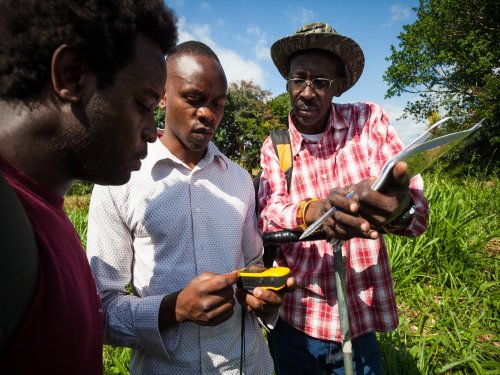 7 the Africa Biodiversity Collaborative Group (ABCG) hosted a speaker series at Conservation International in Nairobi where Alice Ruhweza Executive Director, Vital Signs, Africa Field Division, Conservation International presented on the Vital Signs program. In the presentation, Alice shared results of the Vital Signs program first phase of implementation and invited opportunities for collaboration for the second 5 years phase of the program.
7 the Africa Biodiversity Collaborative Group (ABCG) hosted a speaker series at Conservation International in Nairobi where Alice Ruhweza Executive Director, Vital Signs, Africa Field Division, Conservation International presented on the Vital Signs program. In the presentation, Alice shared results of the Vital Signs program first phase of implementation and invited opportunities for collaboration for the second 5 years phase of the program.
The Vital Signs (VS) monitoring system collects and integrates data using standardized protocols and methods including household surveys, vegetation plot measurements, and remote sensing, and has been under implementation in four countries in sub-Saharan Africa (Tanzania, Uganda, Rwanda, and Kenya) since 2012. The data aims to communicate the importance of ecosystem services for small holder agriculture, and guide governments, policy makers and other key stakeholders in understanding the competing priorities at landscape level and the complex trade-offs between agriculture, ecosystems and human wellbeing.
Preliminary findings from the data collected show that:
Click here to view presentation slides for more project results
Partnership with ABCG
Earlier this year, ABCG, through its Emerging Issues small grant program awarded Vital Signs a grant to ‘Establish a Community of Practice to Share Best Practices and Enhance Learning from the Vital Signs Monitoring System and the Resilience Atlas in East Africa’. This project aims to establish a community of practice of African conservation and development professionals to share best practice and lessons from the Vital Signs Monitoring System and the Resilience Atlas as tools to improve spatial planning, decision making, and better understanding of the synergies and tradeoffs between development and conservation.
The ABCG News Digest, April 2017 is a compilation of our recent news, publications and events.
The digest features a listing of our recently published blog articles. Latest publications, including the Conservation South Africa and the Jane Goodall Institute recently completed gender analyses report are include in the recent publications section. Find out about, and participate in upcoming events whose aim is to foster information exchange and sharing lessons from field activities in the upcoming event sections. And lastly, view presentation slides and listen to the webinar recordings of past ABCG speaker series.
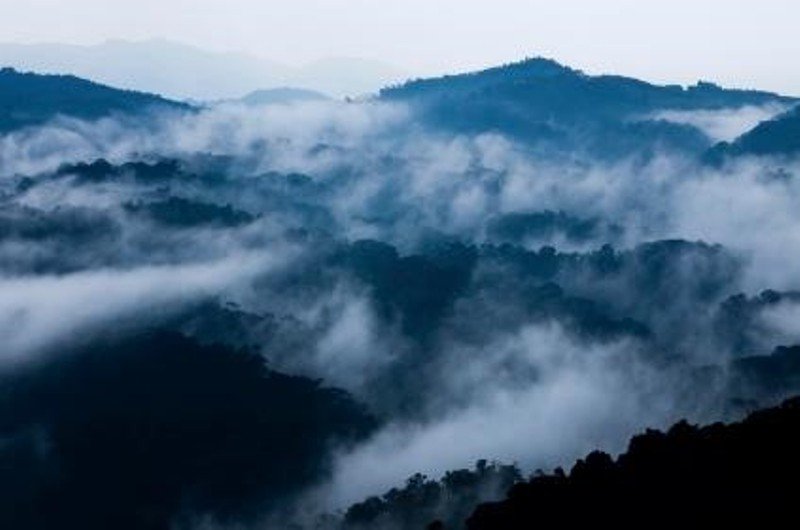
In many parts of sub-Saharan Africa, the walk to the well to collect water for daily use can be a long one. On March 27, Conservation South Africa (CSA) and the Jane Goodall Institute (JGI) met virtually to discuss lessons learned from their respective experiences assessing the roles of men and women in managing freshwater resources and implementing Water, Sanitation and Hygiene (WASH) projects. As components of the Africa Biodiversity Collaborative Group’s activities under the Global Health Linkages thematic area, CSA and JGI recently completed gender analyses in South Africa and Uganda, respectively, to strengthen their program impact and improve conservation and human well-being outcomes.
During the discussion, JGI’s Dr. Peter Apell, primatologist by training, and CSA’s Nolubabalo Kwayimani, municipal support coordinator, shared their respective project’s gender analysis findings and the aspects that surprised them. We noticed three key themes that underscored common threads and challenges across these projects.
1) Despite geographic and cultural differences, gender plays a significant role in successful conservation and human health outreach.
The mountainous, lush forest of Uganda’s Albertine rift region is a fertile, vibrant green landscape, rich with water, flora and fauna. It is one of the most biodiverse regions in the African continent, yet a place where population growth poses a threat to conservation efforts. Humans and their closest relatives—chimpanzees—coexist without boundaries, a delicate juxtaposition that represents a risk to the more vulnerable species. This is particularly true as human communities continue to put pressure on the vital watershed upon which so many lifeforms depend.
In contrast, South Africa’s Eastern Cape appears parched and exposed under the sun—dotted with invasive green trees that voraciously imbibe water from the red, cracked earth. The distant, rugged mountains mark the landscape as much as another deep-cutting legacy—apartheid. The region is home to some of the poorest rural populations in the province. Most notably, this delicate ecosystem is vital to one million people and over 2,000 unique animal and plant species that depend on its water sources.
Across these diverging environmental and geographic contexts, both JGI and CSA are working to integrate WASH awareness and education campaigns with local watershed protection and management. What’s notable is that gender roles and cultural norms play significant roles in both projects. Within these two regions, and indeed throughout much of Africa, traditional gender roles place the burden of most domestic tasks upon the shoulders of women and girls.
Women in both JGI and CSA project sites are responsible for the daily collection of water for household use. This also makes them critical decision-makers of water usage at the household level. Equally, as the gender most responsible for household duties, the need to target women across sanitation-focused educational campaigns is evident across both contexts as a key means to have impact on WASH outcomes.
2) Entrenched cultural attitudes may impede women’s contributions and work against project objectives.
A key observation across both projects centered around the need for both men and women to challenge cultural attitudes that disadvantage women. This is particularly true given that these inequalities—such as the disparate responsibilities of household operations—often inhibit women from contributing to areas where their unique insights and contributions could have the most impact.
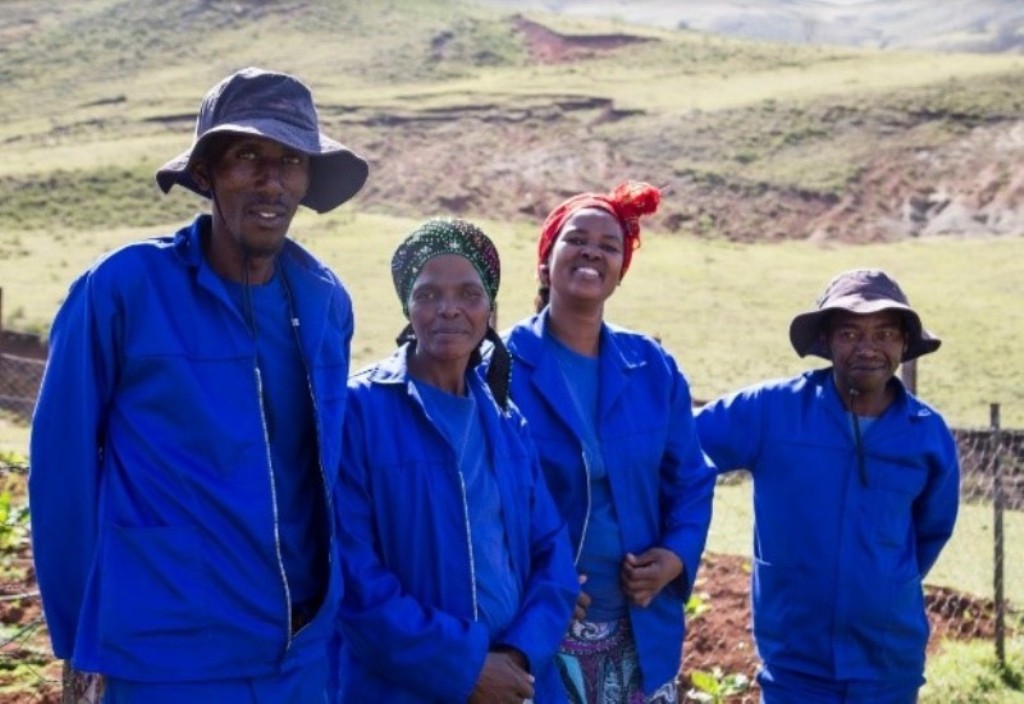
While recognition of this issue is an initial step, going from recognition to change is a big leap given how deeply these attitudes are held, even among women. One man’s response during a JGI interview is particularly illustrative of this point:
“If I went to fetch water for my wife, the women who see me will start asking me if my wife is not home or is she is sick. Even my wife herself will not allow it because of fear that her peers will laugh at her and call her lazy, or disrespectful to me as a husband, and it will be a talk of the village. My wife will even wonder whether I am going to meet other women from the well.”
Challenging these entrenched cultural norms is a slow process. Addressing the root of men and women’s perceptions about appropriate water management and WASH practices is necessary. Both projects found similar responses when it came to including women in decision-making processes, such as scheduling a time specifically for women to speak, or setting up women-only meetings. Over time, such gradual challenges to the norm become the new normal and can help push the goal post inch by inch, centimeter by centimeter, which brings us to our final observation.
3) Tweaking project activities to incorporate insights from gender analysis can help to challenge these norms—and improve conservation outcomes.
During the exchange, both Peter and Nolu made the point that including women—whether it be leveraging them in sanitation efforts or including them in decision-making—is important. This is true for many reasons. First, these issues affect women—often disproportionately more so than men—yet their perspectives are often overlooked. Second, including them helps to support their rights and contributes to gender equality, which is an important goal in and of itself. And finally, women have unique perspectives regarding environmental and sanitation issues, as these analyses have highlighted. Including them can lead to improved outcomes in water resource management and community health.
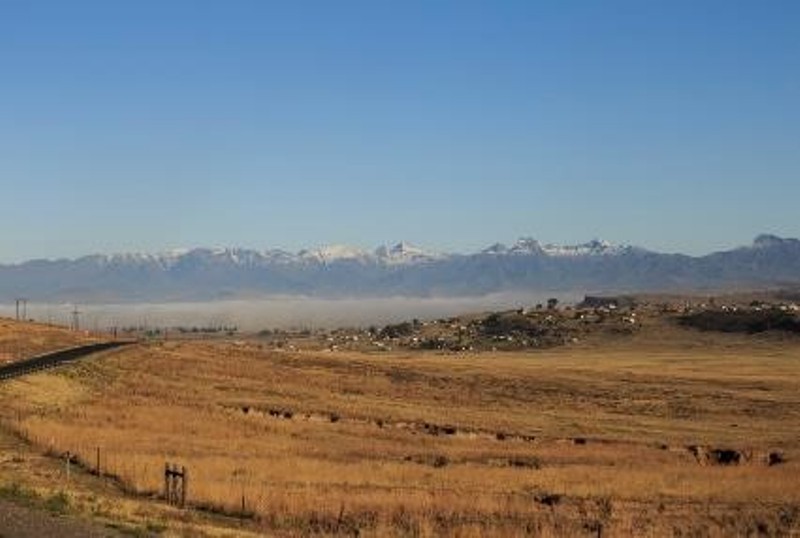
In the case of South Africa, Nolu explained that CSA’s project trains local women as water monitoring volunteers, a role through which they report back to the community on the project’s progress. This role had previously been a man’s responsibility, but now women are also considered for this task. Working with these women and building their capacity in project implementation has helped to build their confidence and empower them and change this gender norm.
Adapting project processes and activities based on observations is key, but these should also include efforts to improve indicators so that outcomes are measured over time. These indicators can even help to address certain cultural obstacles. For example, a project indicator that accounts for the number of decisions that women have contributed to can help respond to a situation in which women do not want to publicly object that they are being excluded from decision-making.
This exchange between Peter, Nolu and ABCG members helped shed light on how efforts to understand and address gender dynamics can support project outcomes by integrating the views of key stakeholders—not only men and women, but also youth and the elderly—who each have valuable insights and contributions to offer.
For more information, please contact Janet Edmond, Conservation International at jedmond@conservation.org
Photo captions
Image1: Clouds rise through Bwindi Impenetrable National Park, part of Uganda’s Albertine Rift region and home to the endangered mountain gorilla. Photo Credit: Benjamin Drummond, CI
Image2: Male and female volunteers assist with water monitoring efforts in CSA’s One Health project, which empowers women to take on roles that challenges traditional norms. Photo Credit: Patrick Nease, CI
Image3: The invasion of water-thirsty wattle in the Mzimvubu Catchment area of South Africa’s Eastern Cape, identifiable as dark green patches throughout the landscape, threatens to degrade local wetlands. Photo Credit: Patrick Nease, CI
On March 17, 2017, The Nature Conservancy (TNC)’s Upper Tana-Nairobi Water Fund, received a grant of 160 million Kenya Shillings from the Coca-Cola Africa Foundation in an event held to mark World Water Day on March 22, 2016.
‘Dr. Susan Mboya, President of The Coca-Cola Africa Foundation officially presented the grant funds to the Steering Team of The Upper Tana-Nairobi Water Fund that will be used to support upstream water and soil conservation initiatives.
‘Nairobi Water Fund is a public-private partnership that was launched in Nairobi on March 20, 2015. As one of the pioneer water funds in Africa, it is investing in conservation programs that benefit communities across the Upper Tana watershed.
‘The Upper Tana River basin which covers approximately 970,000 hectares, is home to 5.3 million people and is supplying 95 percent of the water for Nairobi’s 4 million residents. It also feeds one of the country’s most important agricultural areas and provides half of Kenya’s hydropower output.
“TNC is convinced that the way to tackle some of the gravest environmental and economic challenges we face is by the private sector, government agencies, and conservation scientists to work together,” TNC’s Kenya Country Director, Munira Bashir said.
‘The Upper Tana-Nairobi Water Fund is the first water fund that TNC has developed outside Latin America and the United States. The Fund presents an opportunity to establish Nairobi as a pioneering city in the use of innovative financial mechanisms to protect and preserve the watershed on which its economy and livelihoods depend.
The Nature Conservancy is one of the coalition members of the Africa Biodiversity Collaborative Group (ABCG). ABCG works to advance understanding of critical biodiversity conservation challenges and their solutions in sub-Saharan Africa.
Read the whole news article on TNC’s website: The Coca-Cola Africa Foundation Grants 160 Million Shillings in Support of Upper Tana-Nairobi Water Fund
Read other relate news:Coca-Cola foundation grants Tana -Nairobi Fund sh. 160M to protect water shed areas